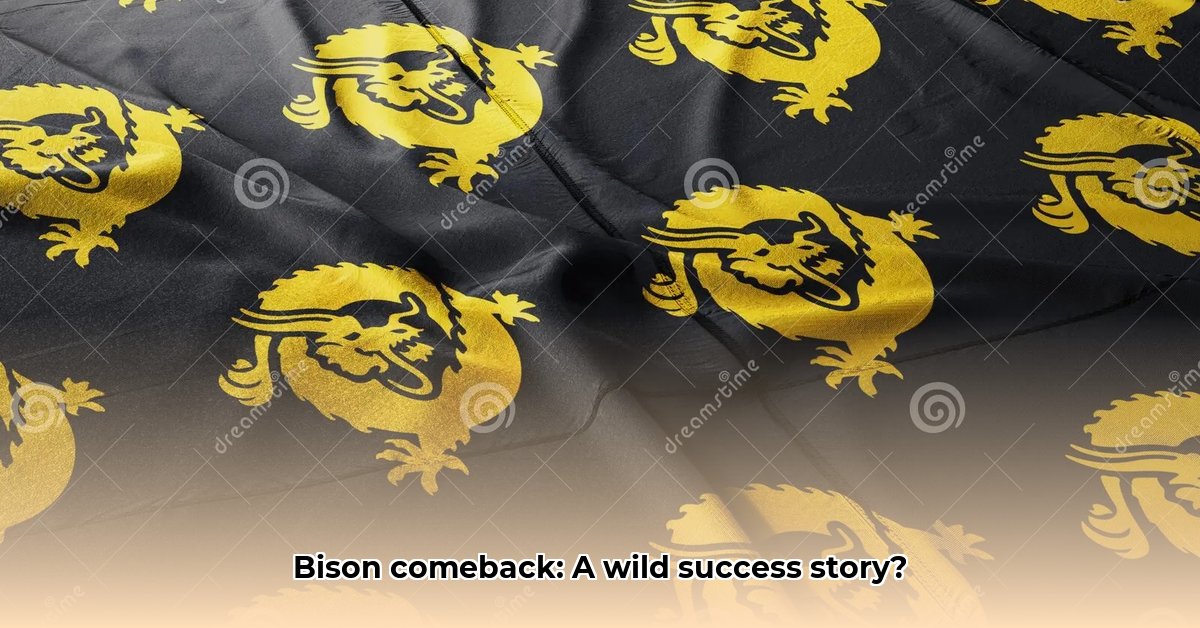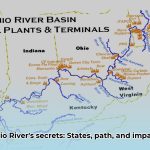Imagine a scene from centuries past: vast herds of bison stretching as far as the eye can see, their powerful hooves pounding the earth in a symphony of nature. This awe-inspiring image nearly disappeared forever. Relentless hunting, driven by westward expansion and fueled by the demand for hides, coupled with devastating habitat loss, pushed these majestic creatures to the very edge of extinction. But, thanks to dedicated and innovative conservation efforts, bison are making a remarkable comeback, reclaiming their place on the American landscape.
This isn’t just a story about rebounding numbers. It’s a complex narrative about the different types of bison – Plains and Wood bison – their unique ecological roles, the specific struggles they still face, and the passionate individuals and organizations dedicating their lives to securing their future. We’ll delve into the science, the history, the cultural significance, the ongoing controversies, and, most importantly, what you can do to help ensure that these iconic animals thrive for generations to come.
The Bison’s Resilience: A Tale of Revival Amidst Enduring Battles
The American bison, an enduring symbol of the American West, once dominated the prairies in numbers that defied imagination, estimated to be between 30 and 60 million. They were more than just grazers; they were ecosystem engineers, shaping the landscape through their grazing patterns, trampling actions, and wallowing behavior, which fostered biodiversity and maintained grassland health.
However, the 19th century witnessed their catastrophic and precipitous decline. Relentless hunting, fueled by commercial interests and a deliberate strategy to undermine Indigenous communities who depended on bison for survival, drove these magnificent animals to the brink. By the 1890s, a mere few hundred individuals remained, scattered in isolated pockets. It seemed impossible for them to recover.
Against all odds, the bison began an extraordinary comeback, a testament to the power of dedicated conservation initiatives. These initiatives included establishing protected areas like Yellowstone National Park, implementing carefully managed breeding programs, and enforcing anti-poaching laws. However, their story is far from over. The fight for their long-term survival continues, with ongoing efforts focusing on protecting their genetic diversity, mitigating habitat loss, and addressing disease outbreaks.
Plains Bison vs. Wood Bison: Appreciating Subspecies Diversity
Within North America, there are two recognized subspecies of American bison: the Plains bison (Bison bison bison) and the Wood bison (Bison bison athabascae). Plains bison, the more numerous of the two, traditionally roamed the vast grasslands of the Great Plains. They are larger and more robust than their northern cousins. Wood bison, as their name suggests, inhabit the boreal forests and grasslands of northern Canada. They are smaller, darker in color, and possess a thicker coat adapted to colder climates.
These subspecies exhibit distinct genetic profiles and play different ecological roles within their respective environments, emphasizing the importance of conserving both. The European bison, or wisent (Bison bonasus), is a distinct species that also faced near-extinction in the early 20th century. Through dedicated conservation efforts, including reintroduction programs, the wisent has made a remarkable recovery; one surprising sanctuary is within the Chernobyl Exclusion Zone, highlighting nature’s incredible resilience and capacity for recovery in unexpected places.
Contemporary Challenges: Threats in a Changing World
Despite significant conservation successes, numerous challenges still threaten bison populations. Although their numbers are far greater than a century ago, they remain a fraction of their historical abundance, and their distribution is significantly restricted.
A paramount concern is conserving the genetic integrity of bison herds. Genetic mixing with cattle, known as introgression, poses a significant threat to the unique genetic makeup of purebred bison. Habitat loss and fragmentation, driven by agricultural expansion, urbanization, and resource extraction, continue to reduce available grazing areas and disrupt migration patterns. Diseases, such as brucellosis and tuberculosis, remain constant threats, particularly in areas where bison share habitat with livestock. Climate change adds another layer of complexity, altering vegetation patterns, increasing the frequency of extreme weather events, and potentially exacerbating disease outbreaks, demanding a multi-faceted response to help bison survive.
Indigenous Leadership: Protecting Bison Heritage and Culture
For countless generations, Indigenous communities have maintained a deep and inextricable connection with bison. They have relied on these animals for food, clothing, shelter, tools, and spiritual sustenance. Bison are not merely a resource but are integral to their cultural identity and way of life.
Their traditional knowledge and sustainable practices are invaluable resources in contemporary bison conservation efforts. By actively involving Indigenous peoples in management decisions, respecting their cultural values, and supporting their efforts to restore bison to tribal lands, we can ensure that conservation is ecologically sound, culturally sensitive, and equitable. Their wisdom, passed down through generations, is essential for the long-term success of bison recovery. The InterTribal Buffalo Council, established in 1992, serves as a powerful example of Indigenous leadership in bison restoration, working to return bison to tribal lands and promote cultural revitalization.
Addressing Controversies: Navigating Conflicting Perspectives
Bison conservation is not without its controversies. Disagreements often arise over population management strategies, the role of hunting, and the commercial use of bison. Balancing conservation imperatives with the economic interests of ranchers and other stakeholders requires careful consideration, open communication, and a willingness to compromise. The ongoing debate surrounding the management of bison in and around Yellowstone National Park, as well as the listing status of the Wood bison, exemplifies these complex challenges. Finding solutions that benefit both bison and the communities that share their landscape requires innovative approaches and collaborative partnerships.
Concrete Solutions: Charting a Course for Bison Preservation
Securing the future of bison requires a comprehensive and coordinated strategy involving diverse stakeholders and targeted action.
Actionable Steps:
- Enforce Stronger Regulations and Genetic Testing: Governments must implement and enforce stringent regulations to prevent genetic introgression from cattle and to effectively monitor and control diseases. Mandatory DNA testing programs for bison herds can help identify and remove animals with cattle genes, maintaining herd purity.
- Invest in Habitat Restoration and Connectivity: Prioritizing habitat restoration and creating corridors to connect fragmented landscapes are crucial for supporting larger, more resilient bison populations. Collaborative efforts between government agencies, conservation organizations, and private landowners can lead to the restoration of degraded grasslands and the establishment of protected areas.
- Empower Community-Based Conservation Initiatives: Successful bison conservation hinges on strong partnerships between conservation organizations, government agencies, Indigenous communities, and local landowners. Supporting community-led initiatives that promote sustainable grazing practices, reduce human-wildlife conflict, and foster a sense of stewardship is essential.
- Promote Sustainable Ranching Practices: Encourage commercial ranchers to adopt sustainable grazing practices that benefit both bison and livestock. Implementing rotational grazing systems, reducing reliance on supplemental feeding, and minimizing the use of pesticides can improve grassland health and reduce the risk of disease transmission. The U.S. National Bison Association promotes ethical and sustainable bison ranching practices among its members.
- Raise Public Awareness and Education: Increasing public awareness of the ecological and cultural significance of bison is critical for fostering support for conservation efforts. Educational programs, outreach events, and online resources can help inform the public about the challenges facing bison and the importance of their conservation.
A Collective Responsibility: Ensuring a Thriving Future for Bison
The bison’s remarkable recovery from the brink of extinction is a testament to the power of collaborative conservation efforts. However, the journey is far from over. Continuous vigilance, adaptive management, and a shared commitment to their long-term well-being are essential. Only through the combined efforts of governments, conservation organizations, Indigenous communities, private landowners, and concerned citizens can we ensure the long-term survival of these magnificent animals, protecting their genetic diversity, ecological integrity, and cultural significance for generations to come. The future of an iconic species, and a symbol of the American West, depends on it.
- Water Mill Electricity Generator Provides Free Home Power - December 16, 2025
- Water Wheel Electric Generator Provides Free Home Electricity - December 15, 2025
- Choosing the Right Portable Hydro Turbine for Your Needs - December 14, 2025
















